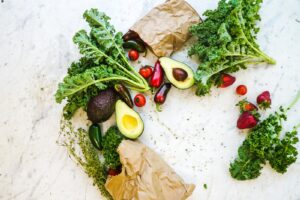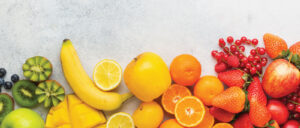If we give broccoli to those with autism, it might make things better by relieving some of the mitochondrial dysfunction that creates even more free radicals.
Current research suggests four causal factors of autism: synaptic dysfunction, oxidative stress, mitochondrial dysfunction, and neuroinflammation. These factors identify the problem but do not identify the cause.
Harvard neurologist Martha Herbert said, “I think we need to conduct research as if we know this is an emergency.” Already, up to 1.5% of American children have autism, and the incidence appears to be on the rise.
Once it became understood that one cause of autism may reside in the synapses, the nerve-to-nerve junctions where information is transmitted, researchers turned to heat shock proteins, which are released by the brain when you have a fever. The fever can improve synaptic transmission and may be capable of improving long-range brain connectivity, which is depressed in autism.
A compound, sulforaphane, upregulates those heat shock proteins, so it might be possible to get the benefits without the fever. Which drug company makes it? What do I ask for at the pharmacy? You don’t.
You just need to check out the produce section at your local market.
Sulforaphane is not made in a chemical plant — it’s made by a real plant. Sulforaphane is made by broccoli, kale, cabbage, collards, and cauliflower — in other words, by cruciferous vegetables. Perhaps if we give broccoli to those with autism, it will make things better by boosting the heat shock proteins. Hmm. Easy enough to try.
Synaptic dysfunction is not the only contributing cause of autism. There’s also oxidative stress. The brain is particularly vulnerable to oxidative stress because lots of free radicals are forged in the brain, which has few antioxidant defense capacities. There is a long history of studies showing that Autism Spectrum Disorder (ASD) is associated with oxidative stress and diminished antioxidant capacity. Nrf2 levels are nearly cut in half — they trigger our body’s antioxidant response. What is Nrf2? It’s considered a master regulator of our body’s response to environmental stressors. How can I boost Nrf2 levels? Can I get it at the drug store? Can I get a prescription? No.
Sulforaphane just so happens to be perhaps the most potent naturally-occurring inducer of Nrf2 on the planet. Under any kind of stress — oxidative stress, inflammatory stress — Nrf2 triggers antioxidant response elements, activating all sorts of cell-protective genes that balance out and detoxify free radicals and facilitate protein and DNA repair. If we give broccoli to those with autism, it might also make things better by triggering Nrf2, which activates those antioxidant response elements.
There’s also the mitochondrial dysfunction. Children with autism are more likely to suffer from dysfunctional mitochondria, the little power plants within our cells where metabolism takes place. If only there were a food that could improve mitochondrial function … Yes. You guessed it. A diet rich in cruciferous vegetables effectively retunes our metabolism by restoring metabolic homeostasis, or metabolic balance — power plants for our cellular power plants. If we give broccoli to those with autism, it might make things better by relieving some of the mitochondrial dysfunction that creates even more free radicals.
Neuroinflammation, or brain inflammation, is another causal factor in autism. If, at autopsy, you examine brain tissue of those with autism, you see inflammation throughout the white matter; if you do a spinal tap, you find up to 200 times the levels of inflammatory mediators, such as interferon, bathing their brains. What’s causing all that inflammation?
Well, the master regulator of the inflammatory cascade is a protein called NF-kappa-beta, which induces inflammation. If overexpressed, as in autism, it can lead to chronic or excessive inflammation. If only there were a food … Really? Broccoli does that, too? Yes! In fact, the major anti-inflammatory mechanism for sulforaphane is inhibiting NF-kappa-beta.
Give broccoli to someone with autism, and heat shock proteins are released to boost synaptic transmission, Nrf2 is activated to wipe out free radicals, mitochondrial function is restored, and the inflammation triggered by NF-kappa-beta is suppressed. One food counters all four purported causal factors of autism. That is one of the differences between foods and drugs. Drugs tend to have single effects. But ASD is multifactorial, so it’s no wonder there are no drugs that work. On the other hand, strategies using multi-functional phytochemicals such as sulforaphane — or even better, the whole plants themselves — are highly attractive … in theory. You won’t know until you put it to the test. Besides, broccoli tastes good.






